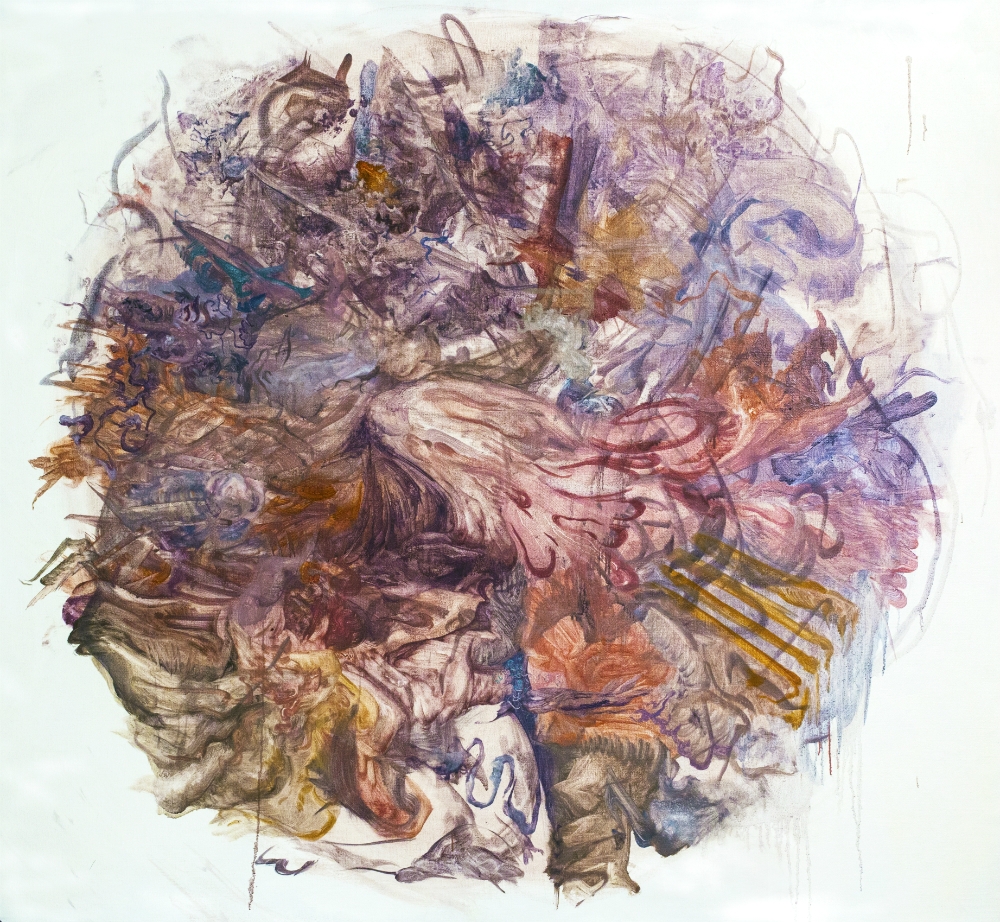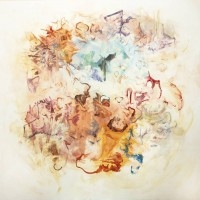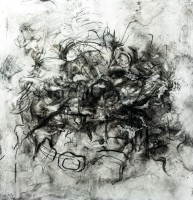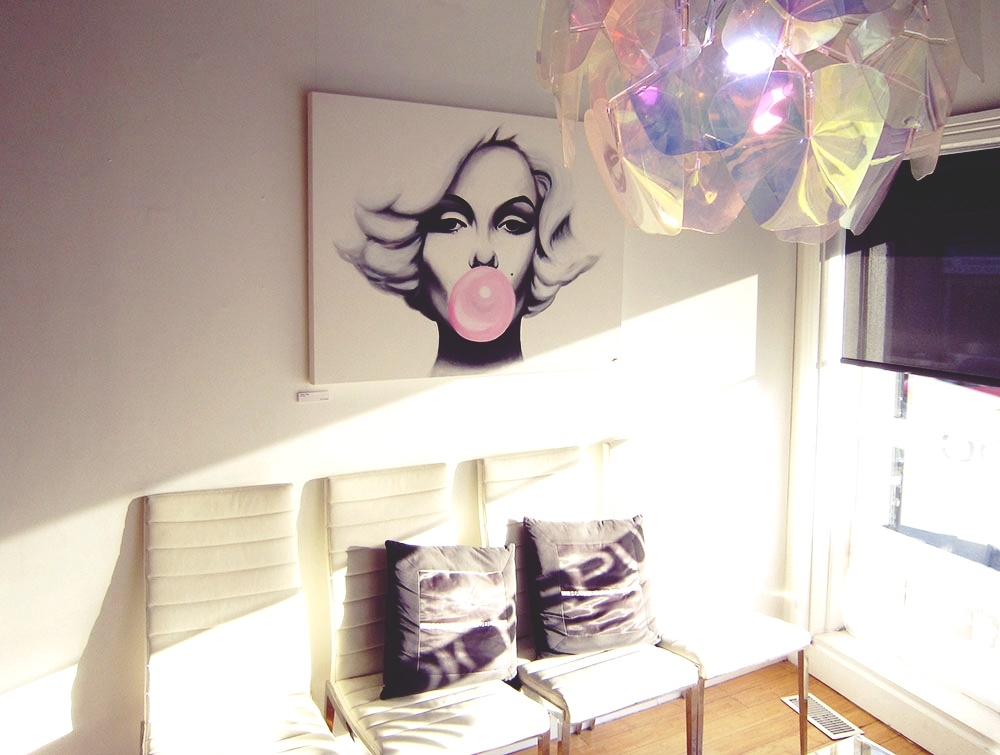
Take a Look Inside Jordan Clayton
“Toxoplasmic Encephalitis,” Oil on Linen, 127 x 132, 2015.
If you stepped into Jordan Clayton’s studio, it might take you a minute to find anything out of place. The room in his Toronto apartment has just about everything you’d expect. There’s a wall with giant canvases leaning against it, brushes, a bit of oil paint splattered around, and of course, bacterial cultures growing on the window sill.
Like many artists, Clayton finds inspiration in his own body. He just goes much, much smaller.
It all started when Clayton was diagnosed with a digestive parasite after living with it for three years. He went through a series of procedures that introduced him to the organism, and how if affected his body, firsthand.
“It sparked this real morbid curiosity,” Clayton says. Already a visual arts student at the University of Ottawa, he began harvesting organisms from his own body and growing them in his studio. Once he’d spent enough time observing the cells, he started to paint them.

“It sort of just made its way into my work,” he says.
Sitting inside Studio Sixty Six on Muriel street, Clayton and I are surround by that work. Although Clayton speaks like a biologist, casually throwing around words like “formic-conjugation,” he looks like an artist. He wears his short hair blonde on the top and brown on the sides and he’s got a tiny splatter of white paint in the middle of his thick-rimmed eyeglasses.
The paintings around us are like huge, colourful, Rorschach inkblots. It’s easy to stare into one and imagine a beautiful landscape or a den of snarling monsters. Some are defined by delicate spirals and others by sharp corners. While some people might find Clayton’s research methods a little unpleasant, it’s hard to see the final product as anything but beautiful.
Although the works are based off organisms that Clayton collects, none of the paintings look like what you’d see through a microscope.
“There is a lot of conceptualization involved,” Clayton says. He lets each organism’s growth process and its effect on the human body altar his painting.
“It’s all simulation, it’s meant to be familiar, not accurate,” he says.
Although the paintings are mostly abstract, Clayton does sneak in a few recognizable images to draw the viewer in.
You can see one of those images in his gorgeous painting Toxoplasmic-encephalitis, featured at the top of this article. Encephalitis is a swelling in the brain, and to represent that, Clayton painted a lobe-like streak of pink in the middle of the painting. Toxoplasmic-encephalitis is also one of the only circular paintings in the exhibit. Its bulging shape reflects a swelling brain pressing against the edge of its skull, and the meticulously detailed work carries a painful urgency.

“To me I thought it was some sort of imagined, abstracted landscape,” says gallery director, Carrie Colton. “I guess it is, it’s sort of the landscape of cells.”
“I think he’s doing something really new, and different,” she adds.
Colton isn’t the only person to have seen something in Clayton’s work. The young artist has also shown in Toronto, and his work is currently part of a group exhibit in Chelsea, Manhattan.
Aside from his own body’s cells, Clayton also paints bacteria from blue cheese and probiotic yogurt. His next project will look at single celled organisms growing in Lake Ontario. So far though, Clayton’s findings have been a bit disappointing.
“I’ve always heard that Lake Ontario is this nasty, dirty environment,” he says.
“But it’s actually deceptively clean.”
Jordan Clayton’s exhibit, “A Dialogue with Taxonomy,” is on display at Studio Sixty Six until August 2. You can find out more about it, and the artist, on the studio’s website.












